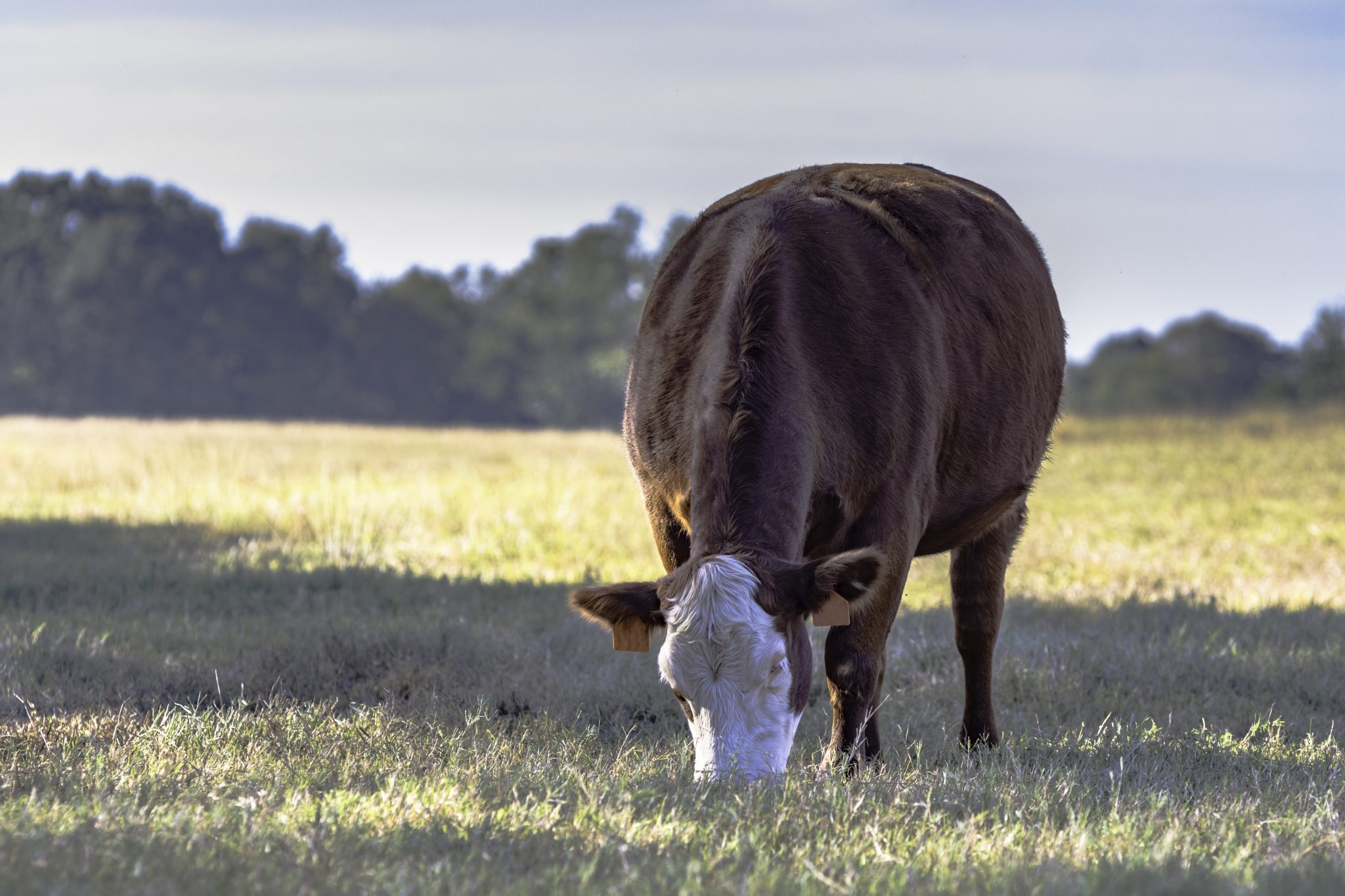Beef

What Are Ionophores?
Ionophores are feed additives used to improve animal body weight gain and feed efficiency in beef cattle diets. These additives alter rumen metabolism and aid in the reduction of acidosis, bloat, and coccidiosis. They are fed in small amounts, and feed or mineral supplements can be used as routes of administration.
Mode of Action
There are three commercially available ionophores in the United States: monensin (Rumensin), lasalocid (Bovatec), and laidlomycin propionate (Cattlyst). Ionophores select against Gram-positive bacteria and protozoa in the rumen due to their cell membrane composition, while typically Gram-negative bacteria are resistant to ionophores. This causes a shift in the microbial population of the rumen, which increases the efficiency of rumen fermentation. The main products of rumen fermentation are volatile fa y acids (acetate, propionate, and butyrate), methane, lactic acid, ammonia, and microbial protein. Ionophores increase efficiency by increasing propionate production and reducing acetate, butyrate, lactic acid, the acetate:propionate ratio, and methane production.
Delivery Method
Ionophores can be fed to all classes of cattle. The majority of ionophores are provided to growing cattle, but mature cows can benefit from ionophores. Ionophores are typically provided in small quantities in either dry or liquid supplements. They can also be included in loose mineral mixtures or pressed mineral blocks and act as intake limiters. This is especially true for monensin due to its palatability characteristics in loose form. Ionophores are classified as medication and as such may only be purchased already in a feed.
Swine and equine do not have the ability to metabolize ionophores. As such, swine and equine should not
be given feeds containing ionophores. Cattle, sheep, poultry, dogs, and other animals have the capacity to absorb ionophores across the intestinal wall, where they travel to the liver for metabolism and are excreted in bile and feces.
Animal Performance Response
The degree to which ionophores impact the performance of grazing cattle depends on the quality of the forage. Cattle grazing high-quality forages showed a lesser response to ionophore inclusion. However, ionophore inclusion is advantageous no ma er the type or quality of the forage being grazed. Ionophores show no reduction in dry ma er intake (DMI) for cattle consuming forage. However, cattle in feedlots have shown a reduction
in DMI of about 6.4 percent. When steers and heifers grazing warm-season perennial grasses were given 200 mg/day of monensin, average daily gain (ADG) increased by 0.20 lb./day or about 16 percent compared to those that did not receive monensin. When 155 mg/day of monensin were provided, ADG increased by 0.18 lb./day or 13.5 percent compared to those that did not receive monensin. Table 1 provides a summary of the impact of ionophores on cattle performance when different forages are provided.
Economics
Through increased ADG and potentially reduced DMI, ionophores may increase profitability of beef production systems. Studies have shown an ADG increase of 0.49 lb./day and a profit increase of between $15 to 31/steer depending on the cost of supplement and profit potential of the cattle.
Antibiotic Use and Public Perceptions
With consumer concerns about food safety and zoonotic diseases, ionophore use has been under scrutiny. However, because ionophores are not used in human medicine, there is little concern from a human health perspective. Ionophores are not used therapeutically and have a different mode of action than therapeutic antibiotics. Ionophores are not affected by the new Veterinary Feed Directive from the Food and Drug Administration unless used in combination with medically important antibiotics. Contact your veterinarian for more information on medically important antibiotics and best use practices.
Table 1. Effect of the Concentration of Ionophores During Supplementation on Growing Calf Gain Offered Different Diets.*
1 Rouquette et al., 1980
2 Oliver, 1975
3 Imler, 2011
4 Kunkle et al., 2000
5 Fieser, 2007
6 Horn, Hersom, and Cox, 2000
*Adapted and used with permission from University of Florida IFAS AN 285: Application of Ionophores in Cattle Diets, Matt Hersom.
| Diet | Ionophore | Concentration, mg/day | Calf body weight, lb. | Control suppl. gain, lb./day | Ionophore suppl., gain, lb./day | Ionophore gain differential, lb./day |
|---|---|---|---|---|---|---|
| Bermudagrass 1 | Monensin | 200 | 550 | 0.93 | 1.04 | +0.11 |
| 200 | 573 | 1.04 | 1.50 | +0.46 | ||
| Bermudagrass 2 | Monensin | 25 | 343 to 518 | 1.24 | 1.55 | +0.31 |
| 50 | 1.61 | +0.37 | ||||
| 100 | 1..72 | +0.48 | ||||
| 200 | 1..56 | +0.32 | ||||
| Bermuda- Bahiagrass 3 | Monensin | 180 | 457 | 0.76 | 0.52 | -0.24 |
| Bahiagrass 4 | Lasalocid | 50 | 480 | 0.76 | 0.66 | -0.10 |
| 100 | 1.02 | +0.26 | ||||
| 200 | 0.71 | -0.05 | ||||
| 300 | 0.82 | +0.06 | ||||
| Monensin | 200 | 480 | 0.76 | 0.91 | +0.15 | |
| Stargrass 4 | Lasalocid | 50 | 480 | 1.25 | 1.34 | +0.09 |
| 100 | 1.35 | +0.10 | ||||
| 200 | 1.27 | +0.02 | ||||
| 300 | 1.33 | +0.08 | ||||
| Monensin | 200 | 480 | 1.25 | 1.50 | +0.25 | |
| Wheat pasture 5 | Monensin | 180 | 542 | 1.81 | 2.03 | +0.22 |
| Prairie hay | Monensin | 200 | 460 | 0.55 | 0.55 | 0.0 |
| Dormant range 6 | Monensin | 150 | 474 | 0.64 | 0.92 | +0.28 |
Download a PDF of Ionophore Inclusion in Cattle Diets, ANR-2375.
Trade and brand names used in this publication are given for information purposes only. No guarantee, endorsement, or discrimination among comparable products is intended or implied by the Alabama Cooperative Extension System.

